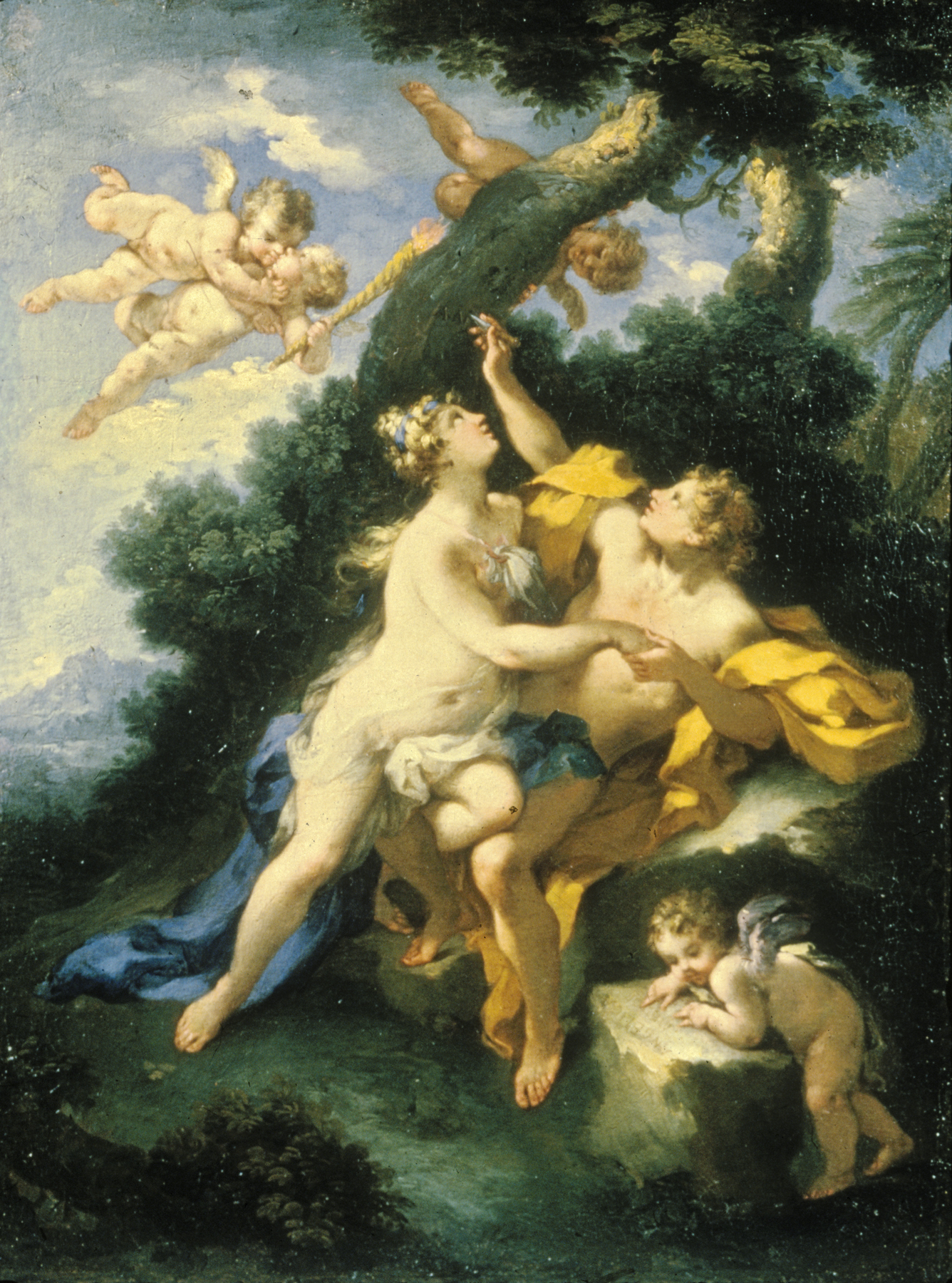Angelica and Medoro
(Baroque Europe )
The subject is from the romantic epic Orlando furioso by Ludovico Ariosto. Written in 1516 and expanded throughout the author’s life, this work and its fantastic stories were popular throughout Europe in the 1500s, and well into the 1700s. A complicated fantasy is set during a long siege of Paris in 885‒86 by Muslim North African Arabs. Here, Angelica, a Chinese princess, and the Muslim knight Medoro, amorously intertwined, are celebrating their love by carving each other’s names into trees. Flying cupids and a torch allude to their burning love.
This episode of the lovers was very popular with 18th-century artists and patrons, who found eroticism handled with a light touch charming. The artist’s audience of aristocrats would have enjoyed projecting themselves into the story: perhaps as a consequence, neither Angelica nor Medoro is depicted as a person of color, as they were in the poem.
Inscription
Provenance
Provenance (from the French provenir, 'to come from/forth') is the chronology of the ownership, custody, or location of a historical object. Learn more about provenance at the Walters.
Don Marcello Massarenti Collection, Rome [date and mode of acquisition unknown]; Henry Walters, Baltimore, 1902, by purchase; Walters Art Museum, 1931, by bequest.
Conservation
| Date | Description | Narrative |
|---|---|---|
| Examination | examined for condition | |
| 4/12/1976 | Treatment | cleaned; inpainted; reconstructed; varnish removed or reduced |
Geographies
Italy, Rome (Place of Origin)
Measurements
Painted surface H: 19 9/16 x W: 14 5/8 in. (49.7 x 37.2 cm)
Credit Line
Acquired by Henry Walters with the Massarenti Collection, 1902
Location in Museum
Accession Number
In libraries, galleries, museums, and archives, an accession number is a unique identifier assigned to each object in the collection.
In libraries, galleries, museums, and archives, an accession number is a unique identifier assigned to each object in the collection.
37.414


